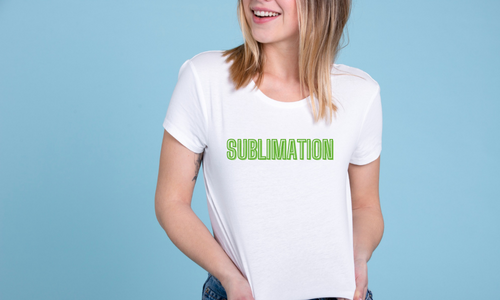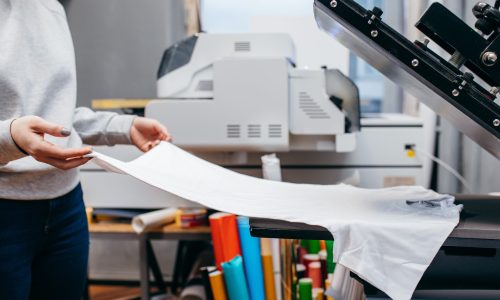What is a sublimation printer?
A sublimation printer is typically a regular A4 or A3 printer specially adapted for sublimation printing by installing a continuous ink supply system and using inks specifically designed for sublimation. The most popular sublimation printers are Epson devices, thanks to their piezoelectric printheads.
What are sublimation inks?
Sublimation inks are special water-based inks that, under high temperature, are able to migrate from the sublimation paper to the open pores of polyester, using the sublimation process.
What is sublimation paper?
Sublimation paper is a special paper for inkjet printers that is coated with a special layer that acts as a carrier for sublimation inks.
Is a press required for sublimation?
Yes, a press is required for sublimation. Without it, it would be difficult to generate the necessary temperature and provide strong and uniform pressure.
What is the best temperature for sublimation?
The standard temperature is usually 180 degrees Celsius, but depending on the type of press, it may be necessary to increase the temperature to 185 or even 190 degrees Celsius. This is due to the inaccuracy of the thermometers and the uniformity of the heating elements in the press.
What pressure should we use on the press?
Generally, for most products we use moderate pressure, but it’s worth paying attention to the recommendations of manufacturers for individual gadgets or products, as their own parameters may be required for many of them.
How long does the heating process take?
The transfer time depends entirely on the product being made. In the case of soft textile products, the time will be shorter, usually between 60-120 seconds. For ceramics or other hard products, it may be longer. This is a parameter that needs to be worked out based on your own experience and adjusted to your devices and products, unfortunately through trial and error method.
Can sublimation be done on cotton?
No, sublimation cannot be done on cotton fabrics. There are some products on the market offering the possibility of sublimation printing on cotton, but the final effect and durability of such markings will not even come close to the real sublimation done according to the rules.
What is covering paper?
Covering paper is usually a larger sheet of low-weight paper that is placed on the product and sublimation paper to avoid any possible stains that could migrate during transfer, for example from the top heating plate in the press.
What is thermal tape used for?
Thermal tape is used to position and hold the sublimation paper on various products, especially on cups or any other products that need to be sublimated in a vertical position. It is also helpful for flat products to avoid any possible movements of the sublimation paper during transfer.
What are the best products to print sublimation on?
Sublimation can be done on all types of polyester products and other gadgets that have been coated with a special polymer layer that can absorb sublimation inks during the transfer process.
Can sublimation be done on colored polyester materials?
It is possible to make sublimation in black or dark colors on light-colored polyester fabrics.
How to prepare a design for sublimation printing?
Before submitting a graphic for sublimation, it is worth preparing it in a graphics program to achieve the best possible end result. Attention should be paid to the resolution of the graphic, color selection, and dimensional adjustment to the product. If you want to achieve the highest possible color consistency, it is better to ask the specialist for preparing the ICC color profiles. Printing a photo or image in the most basic version without using advanced programs will also allow for sublimation, but it will be necessary to check whether the quality of such a print is sufficient.
How to store the sublimation inks and paper?
It is important to pay attention to the expiration date of the sublimation inks, as they should not be left unused for too long after opening. As for the paper, it is definitely recommended to avoid moisture and store it in a dry place, preferably using the original box that will provide optimal storage conditions.



